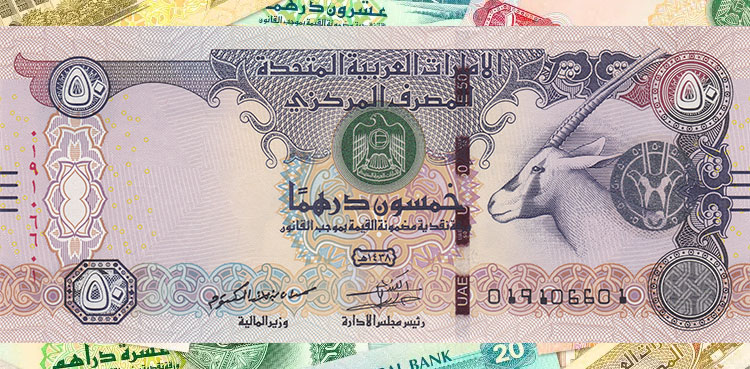Karachi/Dubai- June 16, 2025: The UAE Dirham (AED) remained stable against the Pakistani Rupee (PKR) on Monday by trading at 77.04 PKR.
This marks a leveling off following a consistent upward trend observed earlier in the week, where the AED strengthened from 76.44 PKR to 76.96 PKR, reflecting growing confidence in the Emirati economy.
Understanding Currency Valuation: What Drives the Exchange Rate?
Exchange rates are determined by a variety of factors including interest rates, inflation, trade balances, foreign exchange reserves, and overall economic stability. In the case of the AED-PKR pair, the UAE’s pegged currency system plays a significant role. The AED is officially pegged to the US Dollar at a fixed rate of 3.67 AED per USD, which provides a foundation for its stability. Changes in the PKR’s value relative to the AED often reflect shifts in Pakistan’s macroeconomic conditions, such as inflationary pressures, balance of payments challenges, or fluctuations in remittances and trade flows.
The recent strengthening of the UAE Dirham against Pakistani Rupee can be attributed to both external and internal dynamics. On the UAE side, strong economic fundamentals and proactive policy-making have reinforced investor confidence. Meanwhile, the PKR has faced pressure due to ongoing economic reforms under the International Monetary Fund (IMF) program and fluctuating inflows of foreign exchange.
UAE Economic Policies: A Model of Resilience
The UAE continues to serve as a regional economic powerhouse, bolstered by strategic diversification away from oil, robust sovereign wealth funds, and forward-looking policies. Initiatives like Vision 2021 and Centennial 70 have driven innovation, digital transformation, and sustainable development, attracting global investment and ensuring long-term fiscal resilience.
The country maintains low inflation, healthy foreign exchange reserves, and a well-regulated financial sector, all of which contribute to the strength and stability of the AED. Additionally, the UAE’s deepening economic ties with South Asia, including Pakistan, have increased demand for the dirham in bilateral trade and remittance corridors.
Impact of the Strengthening AED on Trade and Remittances
The stronger AED makes imports from the UAE slightly more expensive for Pakistanis, potentially impacting consumer prices for goods imported from the Gulf nation. However, it also means that expatriate workers in the UAE sending money back home receive greater purchasing power in PKR terms. Given that over one million Pakistanis work in the UAE, this favorable exchange rate offers relief to many families reliant on remittances.
For businesses, the stable yet appreciating UAE Dirham encourages more cautious budgeting and hedging strategies when dealing in dirham-denominated contracts. Analysts suggest that while short-term volatility may persist, the underlying fundamentals point toward continued strength in the AED unless there is a major shift in either country’s economic outlook.
Brief Introduction to PKR and AED
The Pakistani Rupee (PKR) is the official currency of Pakistan, subdivided into 100 paisa or 1,000 halalah. It is issued and managed by the State Bank of Pakistan and reflects the economic conditions of the country, which include high inflation and periodic currency devaluations.
The UAE Dirham (AED) is the national currency of the United Arab Emirates, divided into 100 fils or 1,000 decimal points known as “dirham” subunits. Introduced in 1973, the AED replaced various local currencies used in the emirates and is now a symbol of the country’s unity and economic strength.
As the AED holds steady at 77.04 PKR, market observers continue to monitor the evolving economic narratives of both nations, recognizing the interplay between policy decisions, global markets, and regional trade dynamics shaping the future of this key currency pair.


Leave a Comment